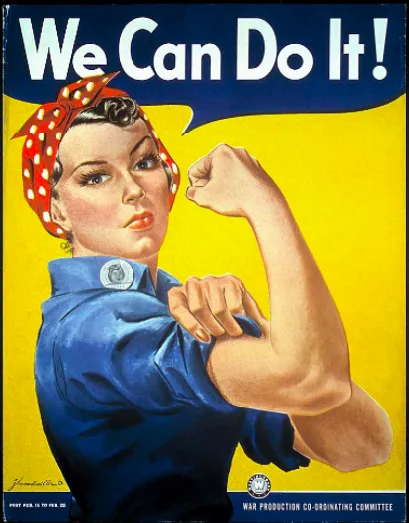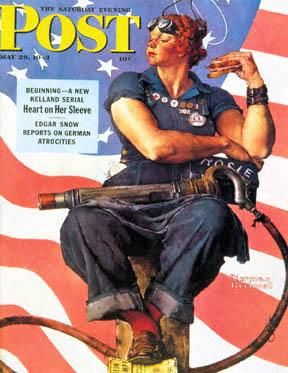The Riveting Story of an American Icon
Rosie has a surprising history
/https://tf-cmsv2-smithsonianmag-media.s3.amazonaws.com/filer/c5/d7/c5d79a73-c52a-4fa9-9cdb-cd55b0308eae/screen_shot_2017-12-05_at_123408_pm.png)
Rosie the Riveter is one of the most iconic symbols of the United States’s homefront experience during World War II. But the story of how she got famous isn’t what you’d expect. Here are three surprising facts about the We Can Do It! poster.
We Can Do It! was never intended for wide distribution, and only a few people saw it during the war
This now-iconic poster was displayed only for a few weeks during the war, and only at one Midwestern factory of the Westinghouse Electric and Manufacturing Company, writes Flavia Di Consiglio for the BBC. The company “commissioned the graphic artist J Howard Miller to produce a series of posters, each intended to be displayed for a limited amount of time,” she writes. We Can Do It! was displayed for a few weeks in February 1943. “It was not commissioned by the US Government and was not even intended for general public view. Only a relatively small number of people saw it back then.”
Given that the poster series also included such images as this one, which reads “Any questions about your work? …Ask your supervisor,” it’s fairly clear that this image was part of a run-of-the-mill corporate exercise, not a symbol of female empowerment. But the poster–which Di Consiglio writes was likely intended to encourage acceptance of women in a traditionally male-dominated workplace–went on to gain greater meaning.

The poster only got famous in the late 1970s
Scholar Jim Aulich told Di Consiglio that the image of a woman in the poster only became popular with the public in the late 70s.
"The poster is simple, populist and without pretension and because of that this image of a strong, self-possessed woman easily gained currency with those who wished to identify with women's rights and equality," he said. "The image is certainly striking and appropriates the familiar image of Popeye the Sailor Man as he is about to set off to rescue damsels in distress by means of his superhuman strength," adds Aulich.
The Rosie you know isn’t the character actually known as ‘Rosie the Riveter’
We Can Do It! isn’t the only image with a claim to this name produced in 1943. In that year, the Saturday Evening Post’s Norman Rockwell produced not one, but two covers featuring his character “Rosie the Riveter.” In the first one, titled Rosie the Riveter, she’s a large woman perched on a pylon, eating a ham sandwich while holding a large riveting machine. Unlike the We Can Do It! Rosie, she’s also covered in grease from her job.

In September of that year, Rockwell introduced the American public to another Rosie. Rosie to the Rescue was wearing an Uncle Sam jumpsuit and was burdened down by symbols from many different homefront jobs: police, nurses, janitors, farmers, milkmen and gardeners are just a few. But neither of Rockwell’s Rosies were the first to bear that name: Rosie is at least as old as 1942, when songwriters Redd Evans and John Jacob Loeb published a song called “Rosie the Riveter.” The Rosie in their song had a boyfriend named Charlie, a Marine, and “Rosie is protecting Charlie, workin’ overtime on the riveting machine.”
The character to appear on the We Can Do It! poster was never directly associated with the name Rosie the Riveter, Consiglio writes. (And in fact the factory where the poster was originally displayed made helmet liners; nobody riveted anything there, according to a Westinghouse historian cited in a book about labor posters.) But maybe that doesn’t really matter: After all, Rosie was a female folk hero on the front lines of World War II, not one single image, idea or woman.
However, the "womanpower campaign" that the United States government introduced in 1943, and that helped fuel the Rosie myth, "was far from empowering" by today's standards, writes Stephanie Buck for Timeline. "Sure, during the war, women were being encouraged to join the workforce, but with the understanding that they would abdicate their posts as soon as the soldiers returned. It was their duty."

